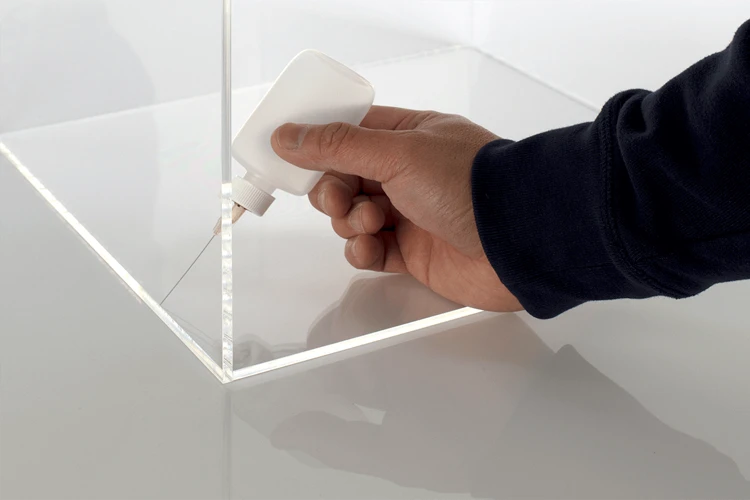Acrylic glue, a popular adhesive in various industries, is known for its strong binding properties and versatility. Understanding the acrylic glue drying time is essential for anyone looking to achieve optimal adhesion in their projects. Knowing the difference between drying and curing can significantly impact the effectiveness of the bond created by the adhesive.
Acrylic Glue Dry Versus Cure
It’s important to differentiate between the terms “dry” and “cure” when discussing acrylic glue. Drying refers to the initial phase where the adhesive becomes solid to the touch, while curing is the complete hardening process that leads to maximum bond strength. The distinction between these phases is crucial for the proper application and handling of acrylic glue.
Understanding the Drying Process of Acrylic Glue
The drying process of acrylic glue involves a chemical reaction that takes the adhesive from a liquid state to a solid one. This transition is not instant and requires a certain amount of time before the glue is touch-dry. However, achieving full strength and durability goes beyond the initial drying period, extending into the curing phase.
Factors Affecting Acrylic Glue Drying
Several variables can influence the drying process of acrylic glue, and understanding these can help you manage the adhesive’s setting time effectively. These factors include temperature, humidity, and the specific acrylic adhesive bonding time.
Temperature and Acrylic Glue Drying
Temperature plays a significant role in the drying process of acrylic glue. Higher temperatures can accelerate the drying time, while cooler conditions can slow it down. It is essential to consider the recommended temperature range for the specific type of acrylic glue being used to ensure optimal drying.
Humidity Impact on Acrylic Glue Drying
Humidity is another critical factor that can affect the drying process. High levels of moisture in the air can prolong the drying time, whereas low humidity environments can lead to quicker drying. Controlling the humidity levels can be key to managing the drying time.
Acrylic Adhesive Bonding Time
The specific formula of the acrylic glue will have its own predetermined bonding time. This refers to the time required for the adhesive to establish a strong enough bond to handle light use. It is essential to follow the manufacturer’s instructions for the particular product to ensure the best results.
Curing Time for Acrylic Adhesive
The curing time for acrylic adhesive is the period needed for the glue to reach its maximum bond strength. This is longer than the initial drying time and can range from several hours to days, depending on the adhesive’s composition and the environmental conditions during application.
How Long for Acrylic Glue to Set
So, how long for acrylic glue to set? While it can be touch-dry within minutes to hours, acrylic glue typically requires 24 to 48 hours to fully cure. Some types may even need longer to develop their ultimate strength. It’s vital to allow the glue to rest undisturbed during this time.
Speed Up Acrylic Glue Drying
There are methods to speed up acrylic glue drying, such as increasing the ambient temperature or using a dehumidifier to reduce moisture. Additionally, ensuring proper ventilation can facilitate the evaporation of solvents, speeding up the overall drying process.
Tips for Working with Acrylic Glue
- Read the manufacturer’s guidelines for application and drying times.
- Prepare surfaces by cleaning them thoroughly before applying the adhesive.
- Apply the glue in a well-ventilated area to aid the drying process.
- Avoid disturbing the bond during the drying and curing phases.
FAQs
Can You Accelerate the Drying Process?
Yes, it is possible to accelerate the drying process by adjusting environmental factors such as temperature and humidity. However, it’s important to do so within the adhesive’s specifications to avoid compromising the bond strength.
How to Tell If Acrylic Glue Has Fully Cured?
Determining if acrylic glue has fully cured can be challenging without testing the bond’s strength. One way to assess curing is by waiting for the time specified by the product’s instructions. If uncertain, it’s best to allow extra time before subjecting the bond to stress.
Conclusion: Maximizing Efficiency in Acrylic Adhesive Use
In conclusion, understanding the nuances of acrylic glue drying time and curing time for acrylic adhesive is vital for achieving durable and reliable bonds. By considering the factors affecting acrylic glue drying and employing practical tips, users can maximize the efficiency and effectiveness of their adhesive applications.
When working with adhesives, drying times can be crucial to the success of your project. If you’re using acrylic glue and wondering about the drying time, you might also be interested in the drying times for other types of adhesives. For those using luxury vinyl tile in their projects, our article on how long LVT glue takes to dry could be very useful. Similarly, if you’re working with plastics, you might want to check out our insights on how long hot glue takes to dry on plastic. And for those using silicone-based adhesives, our guide on how long it takes for silicone glue to dry is a must-read. Understanding these drying times can help ensure that your bonding is strong and lasts long.
References
For further reading and in-depth understanding of acrylic adhesives, consulting the manufacturer’s datasheets and industry guidelines is recommended. Additional resources can be found through professional organizations and material science publications.


